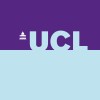
Rescue Thrombolysis for Medium Vessel Occlusion (RESCUE-TNK)
StrokeIschemicThe best reperfusion strategy for medium-sized vessel occlusion (MeVO) is not well established. Given the proven treatment effect of intra-arterial thrombolysis in patients with large vessel occlusion (LVO), the investigators hypothesized that intra-arterial tenecteplase (TNK) could increase the recanalization rate of MeVO and thus improve clinical outcome. The current study aimed to explore the safety and efficacy of intra-arterial TNK in patients with MeVO.

Effects of Intermittent Theta Burst Stimulation in Addition to Constraint-Induced Movement Therapy...
StrokeIschemicIn recent studies, it has been reported that intermittent theta-burst stimulation (iTBS) provides additional benefits when applied in adjunct to the rehabilitation in all stages of stroke (acute, subacute, or chronic). In our study, it was aimed to evaluate the effectiveness of iTBS applied in addition to modified constraint-induced movement therapy (mCIMT). By doing so, we intend to increase patient adherence to neurorehabilitation and decrease the cost of rehabilitation.

The Effect of GLP-1 Receptor Agonist on Cerebral Blood Flow Velocity in Stroke
Ischemic StrokeThis randomized controlled trial investigates the effect of a single dose of glucagon-like peptide-1 (GLP-1) receptor agonist in the subacute phase of stroke in humans. The primary endpoint is the mean flow velocity in the middle cerebral arteries measured by transcranial doppler and cortical oxygination measured by near infrared spectroscopy (NIRS). The secondary endpoints are changes in endothelial/inflammatory biomarkers in the blood, changes in the ankle-brachial index and changes in the reactive hyperaemia index measured by EndoPAT2000.

Establishment of Clinical Basis for Hematopoietic Growth Factors Therapy in Brain Injury
Neurological DiseasesIschemic Stroke3 moreThe purpose of our study is to determine the safety and efficacy of the combination of erythropoietin (EPO) and granulocyte-colony stimulating factors (G-CSF) in patients with neurological diseases. To be specific, our clinical study is expected that the combination injection of EPO and G-CSF shows neurotrophic and neuroprotective effects by facilitating endogenous repair process in patients with neurological diseases including stroke, cerebral palsy, or atypical parkinsonism. Therefore, we will apply our original treatment technique in patients with neurological diseases, which is expected to overcome current ethical and technical limitations of less evidenced functional recovery, hematological changes, and side effects. Eventually, We will establish a comprehensive clinical background about neurotrophic and neuroprotective effects of this hematopoietic growth factors therapy.

Time Window for Ischemic Stroke First Mobilization Effectiveness
Brain IschemiaStroke RehabilitationEarly mobilization was thought to be effective in patients with acute ischemic stroke. As the essential component of stroke unit care, early mobilization has already been part of routine clinical practice. However, it is uncertain that which and when medical service focusing on functional recovery should be delivered after the emergency interventions for stroke. Besides, the optimal time window, for delivering early mobilization after acute ischemic stroke, has not been verified with strong evidence.

The Vesalio NeVa Stent Retriever Registry Study for Treatment of Large Vessel Occlusion Strokes...
Acute Ischemic StrokeA prospective, open label, 90-day study designed to assess the safety, performance and efficacy of thrombus removal in subjects presenting with acute ischemic stroke with the NeVa stent retrievers.

The Role of Hyperoxia in Acute Ischemic Stroke
StrokeAcuteThis study is being conducted to evaluate the potential therapeutic role of hyperoxia when applied in the immediate ischemic period following a stroke in the controlled Emergency Department setting. The study will evaluate the effects of hyperoxia in stroke patients on the production of markers of free radical damage and inflammatory markers associated with hyperoxic lung injury.

OPTIMAS: OPtimal TIMing of Anticoagulation After Acute Ischaemic Stroke : a Randomised Controlled...
StrokeAcute1 moreOPTIMAS is a large, prospective, partially blinded randomised controlled trial of early (within ≤4 days [96hrs]) or standard (between day 7 and day 14 after stroke onset) initiation of anticoagulation after stroke in patients with atrial fibrillation (AF), using any licensed dose of a direct oral anticoagulant (DOAC). The trial will use a non-inferiority gatekeeper approach to test for non-inferiority of early anticoagulation followed by a test for superiority, if non-inferiority is established.

Improving Neuroprotective Strategy for Ischemic Stroke With Poor Recanalization After Thrombectomy...
Ischemic StrokeIn 2015, five randomized trials showed efficacy of endovascular thrombectomy over standard medical care in patients with acute ischemic stroke caused by occlusion of arteries of the proximal anterior circulation. However, sufficient recanalization (mTICI2b-3) can 't be acquired in all patients under thrombectomy. There is a lack of evidence that whether salvage intra-arterial thrombolysis is beneficial for patients with insufficient recanalization after endovascular thrombectomy. The EXTEND-IA TNK study indicated that tenecteplase before thrombectomy was associated with a higher incidence of reperfusion and better functional outcome than alteplase among patients with ischemic stroke treated within 4.5 hours after symptom onset. This study intends to explore the proportion of sufficient recanalization (2b/3) after intra-arterial tenecteplase administration in patients undergoing thrombectomy with insufficient recanalization (1/2a).

Improving Neuroprotective Strategy for Ischemic Stroke With Sufficient Recanalization After Thrombectomy...
Ischemic StrokeThrombolysis and endovascular thrombectomy are the most efficient treatments for acute ischemic stroke patients in time window. Although sufficient recanalization after thrombectomy is more than 80%, HERMES study indicated that nearly half of the ischemic stroke patients under thrombectomy suffered obvious disability. Artery reocclusion, hemorrhagic transformation, and no-reflow phenomenon are among the most important reasons of poor prognosis of acute ischemic stroke patients. The investigators speculate that a combination of argatroban, edaravone, and glucocorticoid may be helpful in preventing artery reocclusion, hemorrhagic transformation, and no-reflow phenomenon. This study intends to explore the safety, feasibility and efficacy of thrombectomy with sufficient recanalization bridged by intra-arterial cocktail therapy in acute ischemic stroke patients.
